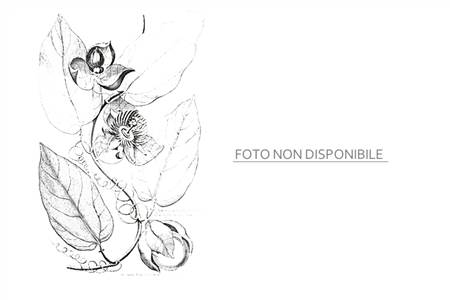
SUBGENUS: passiflora
SUPERSECTION: tacsonia
SECTION: manicata
GEOGRAPHICAL DISTRIBUTION OR ORIGIN:
Venezuela, Colombia, Ecuador and Peru from 1,400 to 3,000 m.
MINIMUM TEMPERATURE: 2 °C
IDEAL MINIMUM TEMPERATURE: 5 °C
SYNONYMS: P. meridensis Karst., P. rhodantha Harms
ETYMOLOGY: From the Latin manicatus, shaped like a sleeve, referring to the curtains.
NOTES: Chromosomes: n=6, 2n=12
PHOTOGALLERY:
DESCRIPTION:
Among the most brilliant and spectacular reds of the passionflower flowers is that of P. manicata. It was previously ascribed to the subgenus Tacsonia, but, having intermediate features between this and the subgenus Passiflora, the section Manicata was established in the supersection Tacsonia.
It is a mountain passionflower (western Venezuela, the Colombian mountain range, Peru and Ecuador) that lives at altitudes of between 1500 and 2700 metres. Its hardiness allows it to resist temperatures of around 2-3°C, so we can be optimistic about its possible cultivation in Italy's milder climatic zones. In fact, we must always consider that very short periods of cold are not particularly significant as they do not affect the plant's vitality.
It has a robust and lively behaviour; in fact, in nature, it can reach 10 m in length.
The leaves (approximate length 15 cm and width 13-14 cm) are trilobate and the upper surface is usually an intense and brilliant dark green. In some clones, however, a slight tomentosity is present.
The 10 cm diameter flowers are scarlet. The five hooked sepals are pink on the lower surface and red, like the petals, on the upper. The corona is made up of 3 or 4 series of short filaments, very dark purple in colour but white at the base.
The 6 cm-diameter ovoid fruits are yellow when ripe and are edible.
Cultivation is easy; however, it is more difficult to get it to bloom, as it does not tolerate the greenhouse environment in summer. Taking it outdoors will produce excellent results and stimulate flowering from late spring to the end of September.
Propagation is done from cuttings or seeds.